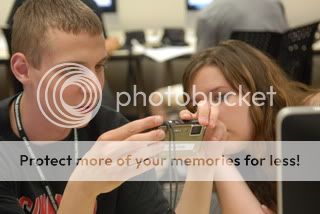
by Rachel Sayers, rachelsayers@live.com
Savannah Kannberg, savannahkannberg@gmail.com
Sarah Carracher, scarracher93@aol.com
Zach Nickels, nickelszac@yahoo.com
Skeptics throughout the years of technological growth have typically agreed on one thing: that print journalism must be a dying profession, according to blogger Tim Berry. This is far from a new topic. In fact, pessimists have thought of print journalism as a dying art since the 1960s. The cynicism began with the invention of different formats of public communication. Starting with the radio, technology eventually yielded television, and then the World Wide Web.
Despite what traditionalists believe, Dr. Hugh Martin, Associate Director of the E.W. Scripps School of Journalism says journalism is not dying but growing into a new era: the era of online news. Instead of discrediting social media as an unreliable and not credible source, the journalism community should embrace these options for what they are: tools to be exploited. Martin says social networking, whether through Twitter, Facebook, or blogging, is the cutting-edge approach to both investigative and conventional journalism.

Martin spoke to high school journalists from six states at the 2010 Scripps High School Journalism Workshop this weekend.
Martin said online journalism allows readers to have instantaneous access to a wide array of news and information, and can be the quickest way to spread a breaking news story. Journalists who are able to utilize the complex social media networks are better able to connect to their audience, and presumably make a greater impact on people’s day-to-day lives. Journalists must be able to reach their target audience, and what better way to connect than through a service that millions use everyday.










